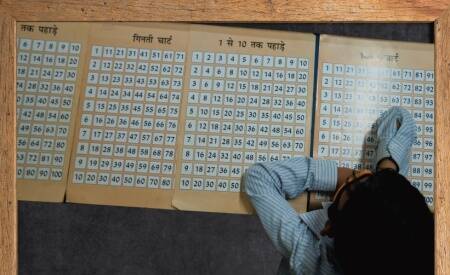New WHO report on assistive technology for disabled provides a roadmap for India
https://www.ispeech.org/text.to.speech
The United Nations Convention on the Rights of Persons with Disabilities came into force in May 2008 to bring to centrestage disability as an intersection of health, human rights and development priority. Subsequently, the World Health Organisation (WHO) and the World Bank jointly produced the World Report on Disability in 2011 to provide evidence for innovative policies and programmes.
In his foreword to this report, Stephen Hawking — who had motor neurone disease — noted that while persons with disabilities face attitudinal, physical and financial barriers, he had been fortunate in having the aid of computer experts who supported him with an assisted communication system and a speech synthesiser which enabled him to compose lectures and papers. The aids Hawking referred to are examples of highly sophisticated assistive technology (AT) – these may include any item, piece of equipment, software programme or product system that is used to increase, maintain, or improve the functional capabilities of persons with disabilities. These aids could also be “physical” products such as wheelchairs, eyeglasses, hearing aids, prostheses, walking devices or continence pads; “digital” such as software and apps that support communication and time management; or adaptations to the physical environment, for example, portable ramps or grab-rails. Different disabilities require different assistive technologies, and these are designed to help people who have difficulty speaking, typing, writing, remembering, seeing, hearing, learning, or walking.
A billion people globally are currently estimated to be in need of assistive technology (AT); this is projected to double by 2050. Drawing upon the World Report on Disability 2011, the 71st World Health Assembly resolved on May 26, 2018 to prepare a global report on effective access to assistive technology by 2021. There were two core concerns: One, 90 per cent of those who need assistive technology do not have access to it, and two, the inclusion of assistive technology into health systems was essential for progress toward the targets in the Sustainable Development Goals (SDG) relating to Universal Health Coverage (UHC). Despite the challenges posed by the pandemic in the last two and a half years, it is an incredible achievement that the World Health Organisation (WHO) and United Nations Children’s Fund (UNICEF) jointly launched the first Global Report on Assistive Technology (GReAT) on May 16.
Best of Express Premium
 Premium
Premium Premium
Premium Premium
Premium Premium
PremiumThe GReAT report draws upon surveys conducted in 20 countries. These indicate that the proportion of the population currently using at least one assistive product ranges from less than 3 per cent to about 70 per cent. Those reporting that they use or need at least one assistive product range from about 10 per cent to nearly 70 per cent; the extent to which these needs are met varies from about 2 per cent to nearly 90 per cent. Universal assistive technology coverage implies that everyone, everywhere receives the AT that they need without financial or any other hardship.
The barriers to access and coverage, in the context of AT, are best understood when seen from the following five parameters.
People: This is related to the age, gender, type of functional difficulty, location and socioeconomic status of those in need of AT.
Products: The range, quality, affordability and supply of assistive products continue to pose considerable challenges. Quality and standard issues such as safety, performance and durability are key concerns. Repairing, refurbishing, and reusing assistive products can be faster and more cost-effective than purchasing new ones.
Provision: The information and referral systems remain complex and services are not available across all geographies and populations. The range, quantity and quality of assistive products procured and provided, as well as the efficiency of delivered services, remain below par.
Personnel: The workforce gaps are not just about numbers but also about adequate training and education too.
Policy: A survey of more than 60 countries reported that they have at least one government ministry or authority responsible for access to AT. Almost 90 per cent of them have at least one piece of legislation on access to AT. Even then, the current levels of access imply a long road to universal AT access.
Disadvantaged groups and communities face hardships in their search for affordable quality healthcare in India and this is more so with respect to obtaining ATs and associated services — the estimated unmet need is about 70 per cent. ATs handed out in camps or as a part of social service initiatives are a sporadic activity without the use of statistics as a basis for unmet needs. Products are often sub-standard and lead to poorer health outcomes. Including assistive technology in universal health and social care services is a critical imperative. The health system’s responsibility in providing equitable access to ATs, just as for essential medicines and vaccines, is increasingly being recognised and country-level plans are being drawn up with an aim to fund and provide ATs under the UHC. Until AT solutions are integrated with the existing primary healthcare packages the current top-down approach is of limited benefit. The GReAT Report provides that roadmap.
Dasgupta is Chairperson at the Centre of Social Medicine & Community Health, Jawaharlal Nehru University; Sharma is an independent public health consultant, formerly with the Indian Council of Medical Research; Bhargava is Director-General at the Indian Council of Medical Research and Secretary, Department of Health Research. The authors are contributors to the GReAT report and Bhargava is also chair of the Editorial Advisory Group








Gloss